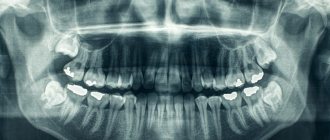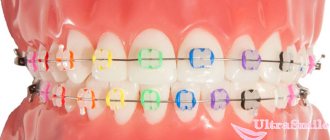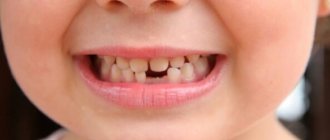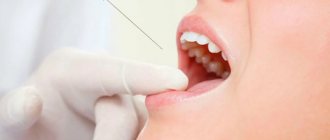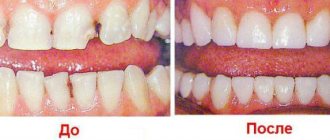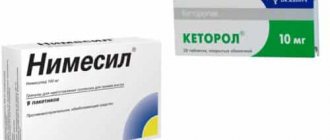Classification by curing mechanism
- chemically cured composites;
- hot curing (the polymerization reaction is initiated under the influence of high temperatures);
- cold curing (the reaction is initiated by a redox mechanism at room temperature);
- light curing.
Light-curing composites vary in paste consistency. They are divided into dense, or packable, as well as varieties of fluid or universal (medium) consistency.
Indications and contraindications
Due to its versatility, this composite can be used in quite a few procedures for the prevention and treatment of dental diseases. Estelite can be used:
- for carrying out the restoration procedure of the frontal zone of the jaw row;
- to eliminate minor external defects from the tooth surface;
- as a base layer;
- in treatment processes using the indirect restoration method;
- to restore artificial tooth fragments;
- as a material for eliminating cracks and diastemas;
- as a component of composite veneers;
- for the prevention and treatment of caries.
The presence of methacrylic monomers in Estelite suggests contraindications for those patients who have an individual intolerance to these substances.
Therefore, before use, you must make sure that this drug will not cause an allergic reaction.
Preparation for use
The process of preparing the oral cavity for appropriate procedures is a necessary and important part of a positive result. Tooth preparation is carried out only in the specified order and includes the following medical procedures:
- Enamel cleaning
– the entire surface of the teeth must be cleaned using a special fluoride-free mass that fits in a rubber container, and then rinsed with water.
- Selecting a color shade
– there is a special shade scale, but to choose the optimal color it is recommended to wait a little, because dry teeth have the same color, while wet teeth are slightly different.
To correctly choose the optimal color option, you should choose the most intense one from those selected.
Attention!
Under no circumstances should professional teeth whitening be performed before these procedures. Otherwise, it may happen that the shade will be quite different after some time. It is also not recommended to use eugenol and its derivatives for protective functions, since then the polymerization process of the presented composite is much worse.
Restoration process step by step
It is recommended to use unidoses in the manner described in the instructions. Before use, an ounce of material is placed in the dispenser, then the cap is removed, which does not allow the material to flow out. The composite is filled directly into the indicated cavity or prepared for application on a special tablet, bringing it to the desired state.
When using a syringe, the following manipulations are performed:
- you need to remove the protective cap;
- turn the handle clockwise;
- place a small amount of mass on a special tablet;
- knead the paste.
Once the material reaches the desired level of consistency, filling and restoration work can be carried out. The paste should be applied in small doses, in layers, so as not to exceed the permissible depth. To guide the dosage, the creators of Estelite have developed a special table.
When the filling process is carried out using the Estelite composite mass, it is prohibited to use other preparations, since the possibility of voids increases and the polymerization process will not proceed properly.
Each layer is polymerized separately, the time specified by the manufacturer. And the surface treatment completes the procedure. The site for restoration work is cleaned and a small cosmetic polishing is carried out using burs with a fine-grained diamond cut.
In order to erase the boundaries between the tooth surface and the filling, the dentist performs a polishing procedure with a multifaceted carbide bur. This does not require water and rotation is minimized.
Palette of material shades
Estelite filling material is available in a very wide range of shades - A1, A2, A3, A3.5, A4, A5, B1, B2, B3, B4, C1, C2, C3, OA1, OA2, OA3, OPA2, BW (created for for filling whitened teeth), CE (for enamel types with increased transparency, cutting edge shade) and WE (white enamel).
The opalescent shades in the product line, which include OA1, OA2 and OA3, are distinguished by a fairly good level of opacity. Thanks to this, Estelite is 100% suitable for blocking the darkness of the oral cavity (this makes it possible to carry out restoration work on cavities of classes 3 and 4).
Opalescent shades are also actively used as dentin shades when restoration procedures are carried out with several different shades in several layers. Shades 4FA1, OA2 and BW are used during restoration work on primary teeth. However, they are practically not used in cases where it is necessary to perform a restoration in which pins and metal structures were used. As well as those teeth whose color has changed significantly. For example, tetracycline teeth.
OPA2 is a color used to hide small enamel stains. The Estelite material can also be used to restore the patient’s opaque teeth.
Disadvantages of composites
The main disadvantage of composite materials is polymerization shrinkage, as a result of which the dimensions and concentration of internal stresses change. In addition, some of them have insufficient wear and color fastness.
High-viscosity (dense) composites have increased compressive strength and greater rigidity than other composites. They are characterized by less shrinkage, and changes in size with temperature fluctuations are practically no different from those of natural dental tissues.
Composites with a flowable consistency have improved aesthetic properties, but are less durable and exhibit increased shrinkage during curing. Their coefficient of thermal expansion is also worse than that of teeth.
Composites on posterior teeth are subject to rapid wear at contact points where the loads are highest. On the chewing teeth, a violation of the marginal seal is also observed. Therefore, it is recommended to use dense varieties with higher wear resistance.
Flowable composites: advantages and application features
Flowable composites have a more liquid structure compared to traditional ones. This allows them to penetrate small defects. Fissures qualitatively fill the problem areas of the area affected by caries. The term “liquid composites” is also often used.
Today, flowable composites are produced by almost all manufacturers of dental materials. They are often marketed as a “smart replacement” for dentin. They have fairly large particles, and most of them use microhybrid filler. Also recently you can find composites based on nanofillers.
Liquid-flowing composite has a number of advantages, due to which it is widely used both for the preparation of caries and for the aesthetic restoration of teeth:
- High elasticity. This makes it possible to compensate for the stress that occurs at the interface of the tooth tissue and the filling material during polymerization shrinkage and chewing loads.
- Good fluidity. Thanks to this, materials are easily introduced into the caries cavity, including hard-to-reach areas. They can be used on vertical surfaces.
- Good shape retention. After the pressure stops, the materials retain their shape perfectly. They do not drain from surfaces and are evenly distributed along the walls of the carious cavity.
Some composites are used to seal fissures, so they have increased fluidity. In addition, almost all modern materials have high radiopacity, which makes it possible to dynamically monitor the condition of the filling and the tissues adjacent to it using x-rays.
There are a couple of downsides to note. Thus, in terms of strength, liquid composites are not as strong as microhybrid and nanofilled ones. Therefore, they are applied in a thin layer and are often used together with more durable materials. Also, the disadvantages include significant polymerization sediment, but this does not lead to significant problems due to elasticity.
To increase the strength characteristics of composites, the particle size of their filling increases. Because of this, these materials are inferior to their analogues in terms of aesthetics, but the use of nanotechnology has been able to eliminate this drawback. Thanks to special processing, nanofilled composites have good durability and polishability compared to conventional ones, which expands the possibilities of their use.
Contraindications
Composite materials are contraindicated if the patient has toxic or allergic reactions to polymers, as well as with bruxism and parafunction. Relative contraindications include increased abrasion of antagonist teeth, as well as the presence in the oral cavity of antagonist teeth covered with crowns made of noble alloys.
Composite materials are an ideal solution for restoring anterior teeth when aesthetics are a priority rather than strength requirements due to the low chewing load. They retain the original shade, have good adhesion and a low rate of recurrent dental damage. An important nuance is that over time they lose their initial relief, since they are constantly exposed to abrasive wear during chewing, brushing teeth and exposure to the erosive environment in the oral cavity.
Modern filling materials
It is believed that people first began to treat teeth 8-9 thousand years ago - relevant evidence was discovered in 2001 during excavations in Pakistan. Dental disease is mentioned in the famous ancient Egyptian medical treatise known as the Ebers Papyrus. The Ebers Papyrus contains eleven recipes for pastes and ointments that were used for diseases of the teeth and gums. Egyptian doctors believed that these compounds had the ability to relieve toothache, reduce inflammation, heal the oral cavity and prevent loosening of teeth.
About a dozen oral diseases and methods of treating them are described in Chinese medical manuscripts, which are about 3 thousand years old.
A wide variety of drugs were used to treat toothache, including instillation of various tinctures into the ears. Celsius recommended poultices, inhalations and even laxatives. It was proposed to fill carious cavities with alum or hot oil. And Avicenna and Scribonius, for example, considered the cause of toothache to be a toothworm, which can be destroyed by smoke when burning a mixture of henbane, onions and goat fat. If teething is difficult, Avicenna advised lubricating the child’s gums with hare brain or dog milk. And for cleaning teeth, ground pumice, deer antlers or snail shells were considered the most suitable. However, the most original recipe for those suffering from toothache was proposed by Pliny the Elder. He advised catching a toad on the night of the full moon, opening its mouth and spitting in it, and then saying something like “Go away and take my pain for yourself!”
The main method of dental treatment was to remove the diseased tooth, however, many ancient doctors wrote about the importance of preserving teeth. It's a shame that not everyone understands this yet!
Since ancient times, many doctors began to try to close the defect formed in the tooth with some material, the so-called filling. Throughout the existence of the science of dentistry, ideas about filling materials have constantly changed.
But where do filling materials get their history? What date can be considered the opening of the filling? How did the idea of them develop and what do we have in modern dentistry at the moment?
We can find the first information about filling materials, and indeed about dental treatment methods in general, in the 9th century BC.
Even the Mayan peoples in the 9th century BC. We understood that the filling should not only protect the tooth, but also look quite aesthetically pleasing. Guided by their ideas of beauty, they drilled out a diseased (and sometimes healthy) tooth using a tube made of durable material, and filled the resulting cavities with gold, jade or turquoise.
The modern market, where there are incomparably more filling materials and technologies, poses an even more difficult task for contemporaries - to find, among all this abundance, their “gold standard” that satisfies the strict criteria of quality, cost and beauty.
So, modern filling materials are divided into several main groups: cements, amalgam, compomers and composites.
Cements.
Fillings made from silicate and silicophosphate cements (“Silidont”, “Silicin”, “Alumodent”, etc.) have low mechanical strength, a high toxic effect on the dental pulp, and poor “marginal adherence” to the tooth tissues, i.e. A gap is formed between the filling and the tooth, as a result of which secondary caries gradually forms under the filling. Currently, they are practically not used.
Glass ionomer cements (Vitrebond, Fugi Ionoseal, etc.), in addition to low cost, have the following advantages: high chemical adhesion to hard dental tissues and filling materials, long-term release of fluoride (anticaries effect). They are not toxic to the pulp, do not require acid etching and significant preparation of hard dental tissues. However, like all cements, they are abrasive and brittle. Therefore, they are used in crown fillings, for securing inlays, orthopedic and orthodontic structures, as insulating spacers, underlays or spacers under restorations made with composite material (Sandwich technique), as well as for filling small cavities on chewing surfaces.
Amalgam.
The use of amalgam in dentistry has a long tradition.
The first reports of the use of silver-tin paste are known from ancient Chinese manuscripts. In Europe, amalgam was used to fill teeth in the 17th century. However, only the Frenchman Tageap in the first half of the 19th century. introduced silver amalgam into the then developing dental practice. From a filling material that was mixed by the doctor himself, amalgam turned into a product manufactured by companies using special technology.
The disadvantages of amalgam include discoloration of the tooth, possible breakage of one of its walls due to the large difference between the coefficients of thermal expansion of amalgam and tooth tissue, and most importantly, the filling emits mercury vapor.
Most experts consider this discharge to be insignificant and are confident that it cannot lead to intoxication of the body. But some argue that the mercury contained in amalgam is found in the blood, urine, and body tissues and can cause various diseases. Discussions around the use of amalgams are still ongoing. But despite this, it remains one of the most popular filling materials in the world for more than 100 years. In Russia, amalgam fillings are now practically not installed.
Ormokers
This is a new group of polymer filling materials based on a new organic compound - ceramic polysiloxane. The name comes from a combination of the words “ORGANICALLY MODIFIED CERAMICS”.
The material has the ability to release phosphates, calcium and fluorine ions. Ormokers are distinguished by significant strength, biocompatibility, and a high degree of polymerization. However, many doctors, including our clinic, note significant shrinkage of these materials, insufficient shine of the restoration, and poor polishability. As an example, they can be called “Definite”, Degussa; "Admira", Voco.
Composites
In dentistry, composites consist of an inorganic substance and an organic binding mass. In modern dentistry, fluid-flowing composites, chemical composites, and photocomposites are used. Flowable composites are used for filling small cavities and repairing minor restoration defects. This polymer does not stick to tools, does not leak out of the cavity, and is perfectly combined with other materials; in addition, it is a durable and wear-resistant material. Chemical composite is a cheaper, although not the most aesthetic, material. It is used for the restoration of lateral teeth and wisdom teeth. Before applying the chemical composite, the dentist etches the enamel, covers the cavity with bonding agent and places a filling. The chemical composite must be polished, otherwise it changes color. Photocomposite is one of the modern materials and one of the most expensive. A photocomposite filling hardens in 30 seconds under the light of a halogen lamp. Photocomposites hardly wear out, do not darken over time, and perfectly match the natural color of the teeth. The doctor can apply the photocomposite layer by layer, and ideally restore absolutely any tooth - the filling will look perfect.
What is COMPOMER?
In 1993, the next generation of filling material was released. It combined the protective properties of glass ionomers, and the excellent aesthetic qualities and durability of composite materials, resulting in the name “compomer” - a term derived from two words - COMPOSITE and glass ionomer.
Compomers (Dyract, F-2000 (3M), Hytac (ESPE), Septoglass (Septodent) are mainly used for filling small carious cavities in permanent teeth, any carious cavities in temporary (baby) teeth, as well as non-carious lesions without significant chewing load (wedge-shaped defects, enamel erosion).The disadvantages of modern compomers are their lower wear resistance than composites and weaker fluoride release than most GICs.
Hitech
Dentistry is a dynamically developing branch of medicine, and therefore, we can note the constant search for new composite materials. The most advanced dental materials today are NANOCOMPOSITES. These modern fillings boast an optimal combination of safety, durability and high aesthetic properties. Doctors at our clinic use the most modern composites in their work: Enamel PLUS, Tetric, Filtek Supreme XT. These materials, having absorbed all the best, have acquired new features that make it possible to achieve excellent aesthetic results in a simpler way while reducing time costs. The fundamental difference between nanocomposites is the presence of microparticles that provide high saturation of the material, resulting in a high degree of strength and high quality polishing, as well as the original shine of the restoration.
Thus, nanocomposites are the most modern filling material, applicable to restorations of absolutely any complexity.



